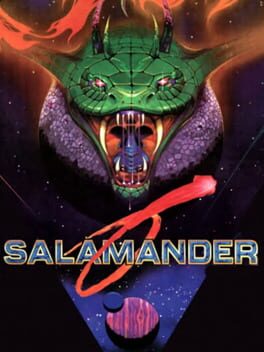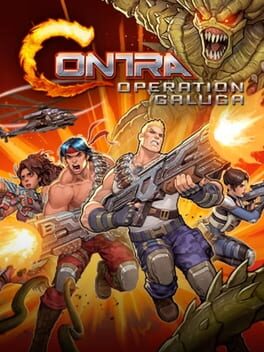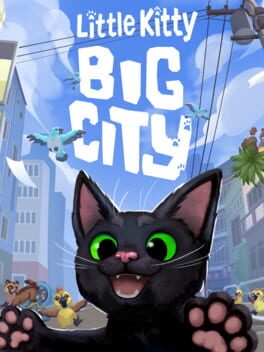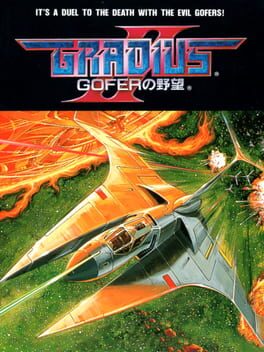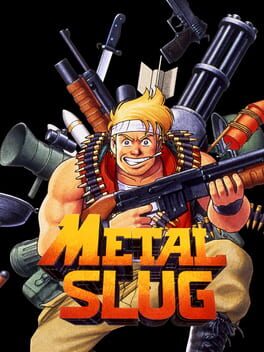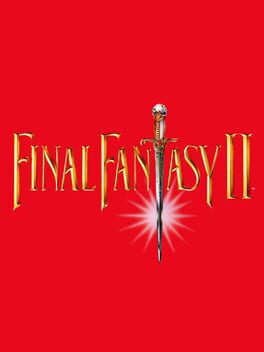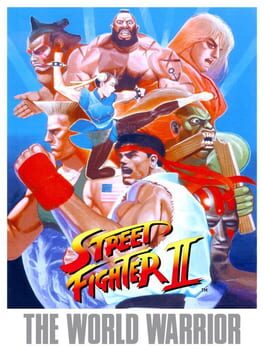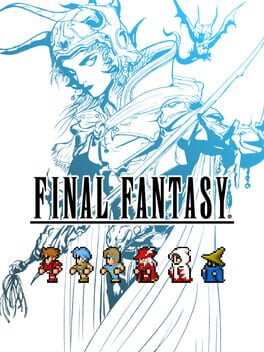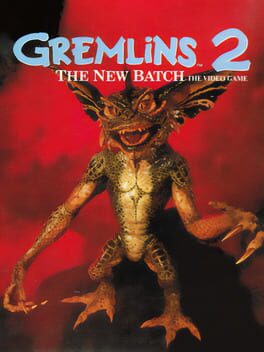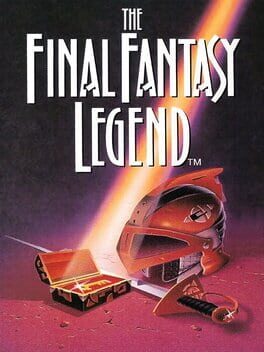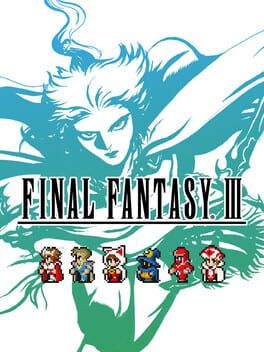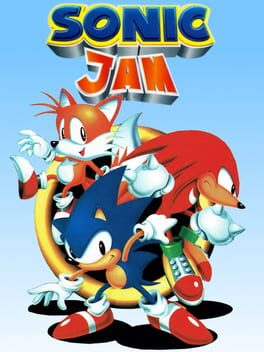TheMaxine
1986
Hey, you know what? It's not Rogue Corps. And with Konami, that's really all you can ask for in this day and age.
It is what it is, just another alright entry in the series. A series which 30 years ago, used to innovate and push the limits of high-intensity action, but after Hard Corps, has remained content rehashing ideas and setpieces as homage to fulfill an entire game's length. And this game is no exception to that trend, as obviously, it's just a remake of Contra 1, with a little bit of Contra 3 & Hard Corps elements thrown in.
On the other hand, it is by far the best entry point for newcomers, with its customizable difficulty, the choice between 1-hit kills and multiple health points, and the Perk system that through further replays of the game, could grant you the benefits required to get past that one part you're struggling with. The movement feels great, and the weapons are very satisfying to blast your way through hordes of aliens with. Some levels can last as long as 10 minutes, but I was getting so into into the mindless carnage of it all, they always felt way shorter than that, and I think that's indicative of something good. In the end, I don't think this game did anything exciting or new, but as far as simple run 'n gun action goes, I'd say the 2 hours flew by quite enjoyably.
One big problem: This game's asking 40 dollars for 2 hours of what is clearly a budget-minded game based on a bunch of ideas from 30-40 years ago. I know we've just switched over to Daylight Savings, but that's only an hour forward, whereas Konami thinks we've moved all the way to fuckin' April Fools with price tags like this. I mean, sure, there's some replayability, but it's mostly like, do you want to play on a harder difficulty now? Do you want the original soundtrack mode? Or some new characters? None of this warrants a price that high, and you'd be a much wiser person if you were to wait for a sale. You've already waited this long for a decent Contra title, what's another couple months?
It is what it is, just another alright entry in the series. A series which 30 years ago, used to innovate and push the limits of high-intensity action, but after Hard Corps, has remained content rehashing ideas and setpieces as homage to fulfill an entire game's length. And this game is no exception to that trend, as obviously, it's just a remake of Contra 1, with a little bit of Contra 3 & Hard Corps elements thrown in.
On the other hand, it is by far the best entry point for newcomers, with its customizable difficulty, the choice between 1-hit kills and multiple health points, and the Perk system that through further replays of the game, could grant you the benefits required to get past that one part you're struggling with. The movement feels great, and the weapons are very satisfying to blast your way through hordes of aliens with. Some levels can last as long as 10 minutes, but I was getting so into into the mindless carnage of it all, they always felt way shorter than that, and I think that's indicative of something good. In the end, I don't think this game did anything exciting or new, but as far as simple run 'n gun action goes, I'd say the 2 hours flew by quite enjoyably.
One big problem: This game's asking 40 dollars for 2 hours of what is clearly a budget-minded game based on a bunch of ideas from 30-40 years ago. I know we've just switched over to Daylight Savings, but that's only an hour forward, whereas Konami thinks we've moved all the way to fuckin' April Fools with price tags like this. I mean, sure, there's some replayability, but it's mostly like, do you want to play on a harder difficulty now? Do you want the original soundtrack mode? Or some new characters? None of this warrants a price that high, and you'd be a much wiser person if you were to wait for a sale. You've already waited this long for a decent Contra title, what's another couple months?
It's a cute concept in any case, but my willingness to play this game lived or died by how crazy the cat's jumping abilities were. After all, cats are capable of insanely high jumps. Playing this game for 50 minutes, this cat was probably the weakest jumping cat I've ever seen in my life. Can barely climb up a short ledge, felt like I had anvil weights attached to my legs. It's possible that the cat's jumping power improves as you make progress, but even so, the game in general had a heavy control feel that went against all my expectations of a nimble and agile cat. It did not make for a good first impression, and thus I couldn't muster up the will to play any further. That cat do be cute though
If you liked the first Gradius, good news, it's more of that. It's just as punishing, and it's just as satisfying to get that fully upgraded ship. I also really liked the music in this one, that song at the beginning of each stage really inspired me to keep going. Overall, a nice little shoot'em up, though not one that I could beat without save states.
1996
Back in the day, arcade cabinets were in the best position to compete against each other. An interesting sounding title, or a bunch of screenshots in a magazine, or some features advertised on the back of the box could've sold you on purchasing a game, but there's no actual guarantee what you'd get is as good as you expected. The same goes for those 90's game commercials that spent 85% of their runtime grossing you out, and the remaining percentage on showing like, 4 seconds of the game. Compared to all that, an arcade cabinet felt more confident. As you walked throughout the room, each cabinet would commonly display an uninterrupted slice of what you're in for, and properly convince you that THIS is what you wanna spend your allowance on, not that loser's game. To that end, these sorts of games had pressure on them to not only look state-of-the-art, they had to play real good too.
Now, Metal Slug heeded this advice, and pulled out all the stops as far as visuals go. Like, god damn, this is a fine looking run 'n gun, far beyond anything its competitors had to offer. The extreme detail on these sprites is so on point, you could look at an explosion graphic and immediately recognize it as being from Metal Slug. Some influence from Hayao Miyazaki's films was taken too, I especially recognize it around the way the enemy soldiers were designed. This is the sort of game where its short length was utilized to cram in an intense amount of visual detail and variety across the whole board.
These sorts of graphics also help to contribute to a better game feel, which considering the simplicity of the first Metal Slug, it desperately needs it. When compared to the later entries, it can't be denied that Metal Slug 1 feels very understated. It lacks the sequel's surreal enemy encounters, or the third game's crazy weapon variety, but in the very least, what is here is loud, fast, and frantic. With some practice, stages are built to be charged through, guns mowing down dozens of enemies, getting in close-range to take out opponents with your knife, and grenades utilized to viscerally blow up the larger tanks. While I'm not too fond of riding the titular Metal Slug vehicle, one huge advantage it does have is when you hold the down button while riding it, you can start chucking your grenades at an insanely rapid pace, and it makes absolute mincemeat out of the bosses. Arcade difficulty still hits like a truck of course, but considering I reached a point where I can clear the first two or three stages without dying once, there's plenty of opportunity to hone in some skills 'n strategies here.
If I were to recommend Metal Slug to anyone, a part of me feels the urge to start them off with Metal Slug X & Metal Slug 3 first, just to give an immediate good impression of where it really honed its identity. But the first game takes half an hour to beat anyway, so there's really no reason why you couldn't blast your way through this one, then play the later ones right after. The modern conveniences of being able to use as many credits as you want via emulation makes these sorts of games as difficult or as accessible as you want them to be. And though a lot of Metal Slug 1's quality rides on its spritework alone, if you were to take it out, you'd still be left with a pretty polished combinatination of platforming and shooting action. It may not be as good or as inventive as the other entries. But it's still fun, and that's that.
Now, Metal Slug heeded this advice, and pulled out all the stops as far as visuals go. Like, god damn, this is a fine looking run 'n gun, far beyond anything its competitors had to offer. The extreme detail on these sprites is so on point, you could look at an explosion graphic and immediately recognize it as being from Metal Slug. Some influence from Hayao Miyazaki's films was taken too, I especially recognize it around the way the enemy soldiers were designed. This is the sort of game where its short length was utilized to cram in an intense amount of visual detail and variety across the whole board.
These sorts of graphics also help to contribute to a better game feel, which considering the simplicity of the first Metal Slug, it desperately needs it. When compared to the later entries, it can't be denied that Metal Slug 1 feels very understated. It lacks the sequel's surreal enemy encounters, or the third game's crazy weapon variety, but in the very least, what is here is loud, fast, and frantic. With some practice, stages are built to be charged through, guns mowing down dozens of enemies, getting in close-range to take out opponents with your knife, and grenades utilized to viscerally blow up the larger tanks. While I'm not too fond of riding the titular Metal Slug vehicle, one huge advantage it does have is when you hold the down button while riding it, you can start chucking your grenades at an insanely rapid pace, and it makes absolute mincemeat out of the bosses. Arcade difficulty still hits like a truck of course, but considering I reached a point where I can clear the first two or three stages without dying once, there's plenty of opportunity to hone in some skills 'n strategies here.
If I were to recommend Metal Slug to anyone, a part of me feels the urge to start them off with Metal Slug X & Metal Slug 3 first, just to give an immediate good impression of where it really honed its identity. But the first game takes half an hour to beat anyway, so there's really no reason why you couldn't blast your way through this one, then play the later ones right after. The modern conveniences of being able to use as many credits as you want via emulation makes these sorts of games as difficult or as accessible as you want them to be. And though a lot of Metal Slug 1's quality rides on its spritework alone, if you were to take it out, you'd still be left with a pretty polished combinatination of platforming and shooting action. It may not be as good or as inventive as the other entries. But it's still fun, and that's that.
1991
I've already experienced Final Fantasy 4 through the Pixel Remaster edition, but I wanted to go back to the SNES original for the sake of the aesthetic, seeing as the remasters all look pretty identical to each other, and just to see how does the original stack up. Expect the review to be described from this kind of perspective.
Obviously, it's the first version of the game, so you're not gonna get any of the remaster's conveniences. Battles are slower, overall menu navigation is slower, there's no run button... one of the more surprising things missing is the ATB bar. Like, the ATB system is in this game, there's just no visual indicators for when will your character be able to have their turn.
The localization is butchered to hell and back, but from my viewpoint, it's a bonus that makes the game's story more entertaining. And you're gonna want that, because the story by itself has pretty barebones characterization, and a comedically frequent amount of death scenes to increase the drama. I'll take all the narm I can get.
So far I've been a bit on the negative side though, is this still a good version of the game to play? Yeah, sure, as long as you're the patient sort. A fast forward button helps too, but patience is more important here. It is an RPG after all. The difficulty is perfectly managable, and considerably better balanced than any of the NES Final Fantasies. I think the only part I didn't like was the final dungeon, which smothered you with enemies that took forever to kill, and made for an incredibly long and exhausting dungeon. You might wanna consider splitting it into two sessions instead of trying to knock out all of it at once. I remember this dungeon being a bit tough in the remaster, but not to this extent.
I think your enjoyment of this version also verges on just how much you care about getting the "true" version, which, well, this one's not even it, because they nerfed Final Fantasy 4's difficulty when they brought it to the west and renamed it to Final Fantasy 2. So, you'd likely have to dabble in some rom hackery to get the real original version of Final Fantasy 4, but I don't have it in me to play a harder RPG than this right now, I'm a coward and like these things to be on the lax side.
Otherwise, if you just want the most QoL-like version of FF4, the Pixel Remaster will do you fine. It's faster, and surprisingly faithful now that I can compare the two. Though, I haven't played any of the other versions of FF4, so it's possible there might be even better versions of the game. Feel free to recommend them in the replies if you have any. Either way, I'll be getting to all of them in the future.
Obviously, it's the first version of the game, so you're not gonna get any of the remaster's conveniences. Battles are slower, overall menu navigation is slower, there's no run button... one of the more surprising things missing is the ATB bar. Like, the ATB system is in this game, there's just no visual indicators for when will your character be able to have their turn.
The localization is butchered to hell and back, but from my viewpoint, it's a bonus that makes the game's story more entertaining. And you're gonna want that, because the story by itself has pretty barebones characterization, and a comedically frequent amount of death scenes to increase the drama. I'll take all the narm I can get.
So far I've been a bit on the negative side though, is this still a good version of the game to play? Yeah, sure, as long as you're the patient sort. A fast forward button helps too, but patience is more important here. It is an RPG after all. The difficulty is perfectly managable, and considerably better balanced than any of the NES Final Fantasies. I think the only part I didn't like was the final dungeon, which smothered you with enemies that took forever to kill, and made for an incredibly long and exhausting dungeon. You might wanna consider splitting it into two sessions instead of trying to knock out all of it at once. I remember this dungeon being a bit tough in the remaster, but not to this extent.
I think your enjoyment of this version also verges on just how much you care about getting the "true" version, which, well, this one's not even it, because they nerfed Final Fantasy 4's difficulty when they brought it to the west and renamed it to Final Fantasy 2. So, you'd likely have to dabble in some rom hackery to get the real original version of Final Fantasy 4, but I don't have it in me to play a harder RPG than this right now, I'm a coward and like these things to be on the lax side.
Otherwise, if you just want the most QoL-like version of FF4, the Pixel Remaster will do you fine. It's faster, and surprisingly faithful now that I can compare the two. Though, I haven't played any of the other versions of FF4, so it's possible there might be even better versions of the game. Feel free to recommend them in the replies if you have any. Either way, I'll be getting to all of them in the future.
I have very little experience with fighting games, aside from some Tekken 3 when I was younger. So, I chose to create a backlog of various popular fighting games, and the oldest version of Street Fighter 2 is first on my list, with the goal to learn the moves of every character, try them out in the campaign, and have a couple multiplayer matches with my friend. Note, that I used the PS1 version of the World Warrior version, from the "Street Fighter Collection 2." But, as far as my research confirms, it should be identical to the arcade original.
I'll say this much, the game is a lot more fun with a friend than a CPU. Which makes me wonder, how many fighting games are like that? Obviously, fighting a CPU is never gonna be as fun as a friend, but... playing this game, you quickly realize that the CPU already knows what you're gonna do from the moment you press the button. But are there fighting games in which the CPU feels more... "real" than that? Where they share a reaction time, a certain skillset, a certain degree of pattern to them like how a human would? I suppose that's something I'll have to find out as I keep going through the backlog, but for this, the CPU was very difficult to learn and predict, and that makes playing it solo kinda annoying. At the very least, you have infinite continues to retry the fights as much as you like.
Debates over the CPU's fairness aside, as a newcomer to fighting games, I can feel that there is extreme value in playing this one. I'm sure that the later editions of Street Fighter 2 will be much more fun to play, and of course that later fighting games will be more intrinsically complex in their movesets. But, to play a game like this, where each character has about 5 special moves, 2-3 of which tend to just be grabs, makes learning the game quick and easy. To me, it's the perfect introduction to the fighting genre. It was a very good idea to start with a simple game, and I'm looking forward to seeing the complexity rise over the next fighting games I play, as the genre and this series continues to evolve all the way to Street Fighter 6.
To put it simply: A perfect game for newcomers. To those experienced in the fighting game genre however, I doubt you'll get much out of this.
I'll say this much, the game is a lot more fun with a friend than a CPU. Which makes me wonder, how many fighting games are like that? Obviously, fighting a CPU is never gonna be as fun as a friend, but... playing this game, you quickly realize that the CPU already knows what you're gonna do from the moment you press the button. But are there fighting games in which the CPU feels more... "real" than that? Where they share a reaction time, a certain skillset, a certain degree of pattern to them like how a human would? I suppose that's something I'll have to find out as I keep going through the backlog, but for this, the CPU was very difficult to learn and predict, and that makes playing it solo kinda annoying. At the very least, you have infinite continues to retry the fights as much as you like.
Debates over the CPU's fairness aside, as a newcomer to fighting games, I can feel that there is extreme value in playing this one. I'm sure that the later editions of Street Fighter 2 will be much more fun to play, and of course that later fighting games will be more intrinsically complex in their movesets. But, to play a game like this, where each character has about 5 special moves, 2-3 of which tend to just be grabs, makes learning the game quick and easy. To me, it's the perfect introduction to the fighting genre. It was a very good idea to start with a simple game, and I'm looking forward to seeing the complexity rise over the next fighting games I play, as the genre and this series continues to evolve all the way to Street Fighter 6.
To put it simply: A perfect game for newcomers. To those experienced in the fighting game genre however, I doubt you'll get much out of this.
It's difficult for me to explain why, but somehow I've found The First Encounter to be a better game. Not that Second Encounter was all that bad, the greater variety of locales was appreciated, and I still got a kick out of slaughtering hordes of enemies.
I think my main gripe was that they went a teensy bit more overboard on the dizzyingly long linear corridors with 200 enemies charging directly at you. I mean, a good chunk of the final level was just that, but there were other examples of it. I feel like if they reigned that in and found more interesting level setpieces to fight enemies in... like that rotating tube straight out of Mario Galaxy! That was cool! But... the room where you and the enemies are constantly bouncing was far from cool. That one just made me go "who the hell thought this room was a good idea"
I think more than ever, Second Encounter made me go "man, this would be a really fun game if I had some buddies to co-op this with." As it stands, I played it alone, and the odds were overwhelming, sometimes in a cool way, and sometimes in some quite cheap and lazily designed ways. But man, to imagine blasting all these fuckers with 3 or more people, as we team up, and split up as one team handles the left side of a level, while the other handles the right... my imagination was flaring up at the idea of it, and I do hope I might be able to find a way to co-op this game sometime in the future.
Also, this comic book-ass story setup... are we ever actually going to kill Mental, or is this mysterious figure always gonna be just one step ahead of us? Come on! If I don't get to kill him in Serious Sam 2, things will get very Serious...
Anyway, did you like First Encounter? Yeah, sure, play this. Were you hoping this game would fix problems from its predecessor, like the overly spacious design? Tough luck, it doesn't. It's more of the first game, and then some.
I think my main gripe was that they went a teensy bit more overboard on the dizzyingly long linear corridors with 200 enemies charging directly at you. I mean, a good chunk of the final level was just that, but there were other examples of it. I feel like if they reigned that in and found more interesting level setpieces to fight enemies in... like that rotating tube straight out of Mario Galaxy! That was cool! But... the room where you and the enemies are constantly bouncing was far from cool. That one just made me go "who the hell thought this room was a good idea"
I think more than ever, Second Encounter made me go "man, this would be a really fun game if I had some buddies to co-op this with." As it stands, I played it alone, and the odds were overwhelming, sometimes in a cool way, and sometimes in some quite cheap and lazily designed ways. But man, to imagine blasting all these fuckers with 3 or more people, as we team up, and split up as one team handles the left side of a level, while the other handles the right... my imagination was flaring up at the idea of it, and I do hope I might be able to find a way to co-op this game sometime in the future.
Also, this comic book-ass story setup... are we ever actually going to kill Mental, or is this mysterious figure always gonna be just one step ahead of us? Come on! If I don't get to kill him in Serious Sam 2, things will get very Serious...
Anyway, did you like First Encounter? Yeah, sure, play this. Were you hoping this game would fix problems from its predecessor, like the overly spacious design? Tough luck, it doesn't. It's more of the first game, and then some.
1993
What the fuck do you mean it's pronounced "Vai"?
Alright... how do I do this? How do I write anything about Vay without my numbness for these sorts of RPG's seeping through? Final Fantasy's spoiling me, man, even the earliest ones take the opportunity to innovate and experiment with their mechanics, delivering a fresh experience each time. Meanwhile, CD Audio has been in full swing since 4 years, and Vay still believes it's all you need to sell your game. No, Vay. You dumb moron. No, it actually takes a little more for your RPG to be interesting than just plopping CD Audio and some cinematics into it. Try as you might, that sort of entertainment only goes so far, when the ratio of boring game design is about 20 hours higher than your 10 minutes of attempts at impressing me.
As is to be done for most of these Working Designs-published titles, I made use of the Un-Working romhack, which reverts all difficulty and balancing changes made in the US version, back to how the japanese original did things. But it's not better. The US version is cited to have some real shitty amounts of grinding, but it turns out, the JP version has the exact same problem, just a different way of handling it. As The Cutting Room Floor puts it, the US version bumps up the difficulty and MP costs by a stupid degree, but makes equipment more affordable. Meanwhile, the JP version's balancing is more chill, except for the part where equipment costs astronomical amounts. I quickly realized that this game was in desperate need of a gold multiplier, but there isn't one. So, the version you choose to play will dictate whether the game is designed around grinding levels, or money. But either way it doesn't matter, because you'll incidentally end up doing both. For hours, and hours.
Makes me wonder, what even is the point of incentivizing exploration through treasure chests containing gold, if that exploration + whatever enemies you fought throughout isn't even enough to cover any of your shopping sprees? In a game based almost entirely around exploring dungeons, curiosity and thoroughness should have you walking out of these adventures feeling like you're rich as hell. For everything you accomplish, Vay tries to impose how your tales are spreading across the isles, the legendary prince that's going to stop the evil empire's reign...!
Yet it seems for all the praise and support you receive, the shopkeepers jack up their prices so high, they may just hate your fucking guts more than the villain does. Forget the "a thousand years passed since 5 magicians sealed the legendary armor" business, I wanna know what those thousand years did to the economy. It really sucks to know that your efforts aren't naturally interwoven into the design. That no matter how hard you strive to keep ahead of Vay, the game seems purposefully balanced around making your efforts insignificant until you do your mandated grinding session.
It's all grind and no substance, folks. The gameplay's a very basic form of turn-based combat, with no defining mechanics to stand out from anything. Even the magic pool is so limited, I maxed it out halfway through the game. It needed more buffs, more interesting strategies to take advantage of, but all it has is healing, elemental damage, and a singular buff to raise your attack for one turn. Meanwhile, enemies take a turn into damage sponge-territory as you edge closer towards the end, and turn what starts as a commendably fast-paced battle system, into a total slog. And oop, you guessed it, encounter rates are bad too! I even halved them using a romhack, and they were still too intrusive.
The positives of Vay are found in the strangest places. Take for example, the soundtrack. It's pretty repetitive, and kinda grating on the ears. But holy shit, why are these battle themes so good? Maybe techno doesn't exactly fit within Vay's fantasy setting, but I don't exactly care, there is a fascinating unconventionality in how it's utilized to ramp up the intensity of the tone here. If Vay leaned into this aesthetic further to support its vague and unexplored sci-fi elements, who knows, it could've gotten this close to having an identity!
And of course, the other thing that kept me going with this game was the localization. Working Designs was truly one of a kind. Their localizations so eloquently stride the line between being more professionally executed than anything else available on the market, and so completely unfaithful and juvenile that you can only enjoy them with a sense of detached irony. How can you be professional yet unprofessional at the same time? Working Designs found a way, and though I cannot respect it by any means, it was the only meaningful entertainment I had throughout the game. It is very odd to hate the one thing that kept me going. But I guess I'm not invulnerable to taking pleasure out of something embarrassing.
Vay is a good YouTube game. That is, there's a lot more worth in following a longplay, because you can skip all the boring shit. And there's plenty of that coming your way, so just do yourself a solid. Time is precious. I'm starting to realize that more than ever. When games like Vay come along, and take 20 hours of my life away from me.
Lord help me, I need to play some better RPG's soon.
Alright... how do I do this? How do I write anything about Vay without my numbness for these sorts of RPG's seeping through? Final Fantasy's spoiling me, man, even the earliest ones take the opportunity to innovate and experiment with their mechanics, delivering a fresh experience each time. Meanwhile, CD Audio has been in full swing since 4 years, and Vay still believes it's all you need to sell your game. No, Vay. You dumb moron. No, it actually takes a little more for your RPG to be interesting than just plopping CD Audio and some cinematics into it. Try as you might, that sort of entertainment only goes so far, when the ratio of boring game design is about 20 hours higher than your 10 minutes of attempts at impressing me.
As is to be done for most of these Working Designs-published titles, I made use of the Un-Working romhack, which reverts all difficulty and balancing changes made in the US version, back to how the japanese original did things. But it's not better. The US version is cited to have some real shitty amounts of grinding, but it turns out, the JP version has the exact same problem, just a different way of handling it. As The Cutting Room Floor puts it, the US version bumps up the difficulty and MP costs by a stupid degree, but makes equipment more affordable. Meanwhile, the JP version's balancing is more chill, except for the part where equipment costs astronomical amounts. I quickly realized that this game was in desperate need of a gold multiplier, but there isn't one. So, the version you choose to play will dictate whether the game is designed around grinding levels, or money. But either way it doesn't matter, because you'll incidentally end up doing both. For hours, and hours.
Makes me wonder, what even is the point of incentivizing exploration through treasure chests containing gold, if that exploration + whatever enemies you fought throughout isn't even enough to cover any of your shopping sprees? In a game based almost entirely around exploring dungeons, curiosity and thoroughness should have you walking out of these adventures feeling like you're rich as hell. For everything you accomplish, Vay tries to impose how your tales are spreading across the isles, the legendary prince that's going to stop the evil empire's reign...!
Yet it seems for all the praise and support you receive, the shopkeepers jack up their prices so high, they may just hate your fucking guts more than the villain does. Forget the "a thousand years passed since 5 magicians sealed the legendary armor" business, I wanna know what those thousand years did to the economy. It really sucks to know that your efforts aren't naturally interwoven into the design. That no matter how hard you strive to keep ahead of Vay, the game seems purposefully balanced around making your efforts insignificant until you do your mandated grinding session.
It's all grind and no substance, folks. The gameplay's a very basic form of turn-based combat, with no defining mechanics to stand out from anything. Even the magic pool is so limited, I maxed it out halfway through the game. It needed more buffs, more interesting strategies to take advantage of, but all it has is healing, elemental damage, and a singular buff to raise your attack for one turn. Meanwhile, enemies take a turn into damage sponge-territory as you edge closer towards the end, and turn what starts as a commendably fast-paced battle system, into a total slog. And oop, you guessed it, encounter rates are bad too! I even halved them using a romhack, and they were still too intrusive.
The positives of Vay are found in the strangest places. Take for example, the soundtrack. It's pretty repetitive, and kinda grating on the ears. But holy shit, why are these battle themes so good? Maybe techno doesn't exactly fit within Vay's fantasy setting, but I don't exactly care, there is a fascinating unconventionality in how it's utilized to ramp up the intensity of the tone here. If Vay leaned into this aesthetic further to support its vague and unexplored sci-fi elements, who knows, it could've gotten this close to having an identity!
And of course, the other thing that kept me going with this game was the localization. Working Designs was truly one of a kind. Their localizations so eloquently stride the line between being more professionally executed than anything else available on the market, and so completely unfaithful and juvenile that you can only enjoy them with a sense of detached irony. How can you be professional yet unprofessional at the same time? Working Designs found a way, and though I cannot respect it by any means, it was the only meaningful entertainment I had throughout the game. It is very odd to hate the one thing that kept me going. But I guess I'm not invulnerable to taking pleasure out of something embarrassing.
Vay is a good YouTube game. That is, there's a lot more worth in following a longplay, because you can skip all the boring shit. And there's plenty of that coming your way, so just do yourself a solid. Time is precious. I'm starting to realize that more than ever. When games like Vay come along, and take 20 hours of my life away from me.
Lord help me, I need to play some better RPG's soon.
2021
A pretty good way to get into the Final Fantasy series, and perhaps to even get into RPG's in general if you're looking to start with something simple.
The remaster brings many QoL changes that remove the tedium of the NES original, including a modern inventory system, a way to auto-battle, fast forward things, and a map to make use of. There's also decent replay value through picking which classes you want to start the game off with. The music kicks ass, also, they did an incredible job remixing it. The overall difficulty is pretty easy, up until you reach the final boss. That one's gonna test you proper.
You're not gonna get an amazing story out of this due to its roots, but if you enjoy the feeling of leveling up, getting stronger, and looking forward to what the next area has to offer, this game more than scratches that itch.
The only major complaint about the remaster is the use of font. There are ways to change it into something more 8-bit looking, which I would recommend looking up.
The remaster brings many QoL changes that remove the tedium of the NES original, including a modern inventory system, a way to auto-battle, fast forward things, and a map to make use of. There's also decent replay value through picking which classes you want to start the game off with. The music kicks ass, also, they did an incredible job remixing it. The overall difficulty is pretty easy, up until you reach the final boss. That one's gonna test you proper.
You're not gonna get an amazing story out of this due to its roots, but if you enjoy the feeling of leveling up, getting stronger, and looking forward to what the next area has to offer, this game more than scratches that itch.
The only major complaint about the remaster is the use of font. There are ways to change it into something more 8-bit looking, which I would recommend looking up.
To my surprise, one of the more competent licensed games in the NES library. When you realize it's SunSoft, it makes sense, they were responsible for the NES Batman game too. Good soundtrack, and a nice variety of weapons keeps you going forward. You do need some tolerance for top-down platforming though, as there's a bunch of it. Oh, and the game ending with an attempt at giving you a fucking seizure wasn't very cool. Not cool at all. Disregarding that though, it was worth checking this out once.
This review contains spoilers
This RPG is clinically insane. Deranged. Every aspect of its design hates you. The first hour of the game is a complete and total drag. Leveling up makes zero sense, it'll either happen or it won't. But there's also ways to easily exploit leveling up. But be careful not to level up too much, because the game has nothing to prevent overflow bugs happening, so your stats may just reset all the way back to 0. Permanent party member death is a thing, so is weapon durability, so is a room full of dead children, because why not!
... And yet, despite just how absolutely fucking jank this thing is, I feel like everybody owes themselves at least one playthrough of Final Fantasy Legend, otherwisely known as the first (or second, if you count FF2) game in the SaGa series. It's chaotic, actively punishing, and yet at times completely broken and in your favor. And that's part of what makes it special, what makes it unlike any other RPG series you'll play.
If you're anything like me, you'll touch the first 30 minutes of the game, go "ugh," and put it down. But then, a day later, as you give it a second chance and figure out what the hell it's trying to do... you'll start warming up to its odd yet unique concepts. It's certainly far from a perfect game, but one worth playing at least once.
... And yet, despite just how absolutely fucking jank this thing is, I feel like everybody owes themselves at least one playthrough of Final Fantasy Legend, otherwisely known as the first (or second, if you count FF2) game in the SaGa series. It's chaotic, actively punishing, and yet at times completely broken and in your favor. And that's part of what makes it special, what makes it unlike any other RPG series you'll play.
If you're anything like me, you'll touch the first 30 minutes of the game, go "ugh," and put it down. But then, a day later, as you give it a second chance and figure out what the hell it's trying to do... you'll start warming up to its odd yet unique concepts. It's certainly far from a perfect game, but one worth playing at least once.
2021
It's... almost there. As usual, the remaster provides some nice music, and much-needed QoL changes to improve the flow of the game. The job system, which allows you to switch between classes at any time, has promise in terms of the experimentation it provides. But...
I was a little disappointed to find out that out of the huge variety of jobs this game provides, the only ones I considered useful were the blatant upgrades of previous jobs. Perhaps that's on me, perhaps I wasn't thinking creatively enough on how to utilize them. I don't know, none of them jived. Whereas I could see the potential in different party combinations in Dragon Quest 3 & 4, most of the ones here felt too unconventional to sink my time into leveling.
Aside from that, FF3 is basically FF1 if it were more inconvenient. The first time the game told me that I needed to miniaturize every party member to enter a small hole, was when I hoped it'd be the last time. But then the game makes you do it 4-5 more times, and everytime it puts you in a major disadvantage against the enemies, where you're spending the entire dungeon in mini form, running away from everything or wasting your very limited magic points.
The ship traversal feels more cumbersome this time around, the way they split things into several ships that each have their own ability, instead of having one ship that upgrades over time. This leads to having to backtrack to the currently-needed ship, which felt unnecessary.
The Crystal Tower, the final dungeon of the game, is infamous for being one of the worst in the series. In the case of the remaster, it was managable enough, but what I didn't know is that there's actually one more dungeon immediately after the Crystal Tower. This made the game's finale rather exhausting to push through. Not difficult, just kinda... "i wish this game ended already" kinda feeling.
The remaster still has some fun moments of dungeon-crawling and adventuring through landscapes, including a neat reveal of just how expansive the world truly is. But, some of its questionable design choices are embedded into its gameplay system, and made me frequently wonder "why did they do it like this?" Better than FF2, but I'd still go back to FF1 sooner than this.
I was a little disappointed to find out that out of the huge variety of jobs this game provides, the only ones I considered useful were the blatant upgrades of previous jobs. Perhaps that's on me, perhaps I wasn't thinking creatively enough on how to utilize them. I don't know, none of them jived. Whereas I could see the potential in different party combinations in Dragon Quest 3 & 4, most of the ones here felt too unconventional to sink my time into leveling.
Aside from that, FF3 is basically FF1 if it were more inconvenient. The first time the game told me that I needed to miniaturize every party member to enter a small hole, was when I hoped it'd be the last time. But then the game makes you do it 4-5 more times, and everytime it puts you in a major disadvantage against the enemies, where you're spending the entire dungeon in mini form, running away from everything or wasting your very limited magic points.
The ship traversal feels more cumbersome this time around, the way they split things into several ships that each have their own ability, instead of having one ship that upgrades over time. This leads to having to backtrack to the currently-needed ship, which felt unnecessary.
The Crystal Tower, the final dungeon of the game, is infamous for being one of the worst in the series. In the case of the remaster, it was managable enough, but what I didn't know is that there's actually one more dungeon immediately after the Crystal Tower. This made the game's finale rather exhausting to push through. Not difficult, just kinda... "i wish this game ended already" kinda feeling.
The remaster still has some fun moments of dungeon-crawling and adventuring through landscapes, including a neat reveal of just how expansive the world truly is. But, some of its questionable design choices are embedded into its gameplay system, and made me frequently wonder "why did they do it like this?" Better than FF2, but I'd still go back to FF1 sooner than this.
1996
1997
The part of the collection that involves the classic Genesis titles is fine. Actually, it's a little more than fine, and is arguably the better way to play the original Sonic trilogy than emulating the Genesis titles. There isn't as much slowdown, instruments don't get cut off by the sound effects anymore due to CD Audio support, there's a mode that slightly rebalances the difficulty to not be as dumb (Example: They give you rings for the Sonic 2 final boss), and they even introduce the spin dash into Sonic 1. That's on top of supporting Sonic 3's lock-on gimmick, and an autosave feature so you don't have to do each game in one go. Diving into some of the bonus content, like scrapped pitches for a cartoon, or the concept art was also pretty fun. The manuals could've also been a neat addition! If they were rendered above a 144p resolution. I can't read this shit, dude.
I only lament that Sonic CD got completely robbed and isn't a part of this collection at all. Unless you count them including CD's opening as part of the bonus content, but that's just rubbing salt in the wound at that point. In general, I wonder if this collection was really worth its asking price back in the 90's. I mean, you've got no 8-bit titles, or spinoffs to speak of... just four old games with a bunch of QoL applied to them. And don't get me wrong, the QoL is very appreciated, so is the bonus content. But even back then, Sonic Jam seems like it missed a big opportunity to let this be the ultimate collection of Sonic games that were out by then, and instead settles only for the utmost necessary components instead. Is this really what Sonic fans deserved for spending their money on the Saturn, plus however much this game costed?
And I mean, you DO have Sonic World, and it's a pretty neat look into what a 3D Classic Sonic title could've looked like if they didn't go down the Adventure redesigning route. But aside from the fact that it's more of a tech demo than a real playable campaign, THIS CAMERA. Dear lord, Mario 64 had its moments here and there, but Sonic World's camera feels especially designed to fight my instincts to the bitter death. Knowing that much of Sonic World's mission structure is dependent on optimal routing of the map layout, this could've been fun if the camera was normal and allowed you to look straight ahead to see where you're heading. But it seems that everytime you start running, it forces you into this dreadful zoomed in top-down perspective that ensures you have as little awareness of the layout around you as possible. Whether this was a result of technical constraints, or just a flaw in the design choice, it makes it difficult to take the incentives of the Sonic World seriously. And its intent of a free and open space to run around in, ends up ruined by a sense of claustrophobia.
Due to Sonic Jam's unfortunate ommissions of certain Sonic titles, and its poorly executed 3D content, I can't objectively consider this a great collection when thinking about the collection that it could've been, were production on it started earlier (as in, earlier than 3 years into the console's lifespan) and been given more time to flourish. But, that's way in the past now. We should also consider the value Sonic Jam has today, especially when your most likely way to experience it will be via emulation. In that sense, if you're just looking for a good way to play the major cornerstones of Sonic's Genesis era, then Sonic Jam at least fulfills that purpose. Sure, Origins has CD, plus widescreen support... but I'd still feel safer choosing to emulate this, than forking over 30 dollars for that. At least Sonic Jam is stable.
I only lament that Sonic CD got completely robbed and isn't a part of this collection at all. Unless you count them including CD's opening as part of the bonus content, but that's just rubbing salt in the wound at that point. In general, I wonder if this collection was really worth its asking price back in the 90's. I mean, you've got no 8-bit titles, or spinoffs to speak of... just four old games with a bunch of QoL applied to them. And don't get me wrong, the QoL is very appreciated, so is the bonus content. But even back then, Sonic Jam seems like it missed a big opportunity to let this be the ultimate collection of Sonic games that were out by then, and instead settles only for the utmost necessary components instead. Is this really what Sonic fans deserved for spending their money on the Saturn, plus however much this game costed?
And I mean, you DO have Sonic World, and it's a pretty neat look into what a 3D Classic Sonic title could've looked like if they didn't go down the Adventure redesigning route. But aside from the fact that it's more of a tech demo than a real playable campaign, THIS CAMERA. Dear lord, Mario 64 had its moments here and there, but Sonic World's camera feels especially designed to fight my instincts to the bitter death. Knowing that much of Sonic World's mission structure is dependent on optimal routing of the map layout, this could've been fun if the camera was normal and allowed you to look straight ahead to see where you're heading. But it seems that everytime you start running, it forces you into this dreadful zoomed in top-down perspective that ensures you have as little awareness of the layout around you as possible. Whether this was a result of technical constraints, or just a flaw in the design choice, it makes it difficult to take the incentives of the Sonic World seriously. And its intent of a free and open space to run around in, ends up ruined by a sense of claustrophobia.
Due to Sonic Jam's unfortunate ommissions of certain Sonic titles, and its poorly executed 3D content, I can't objectively consider this a great collection when thinking about the collection that it could've been, were production on it started earlier (as in, earlier than 3 years into the console's lifespan) and been given more time to flourish. But, that's way in the past now. We should also consider the value Sonic Jam has today, especially when your most likely way to experience it will be via emulation. In that sense, if you're just looking for a good way to play the major cornerstones of Sonic's Genesis era, then Sonic Jam at least fulfills that purpose. Sure, Origins has CD, plus widescreen support... but I'd still feel safer choosing to emulate this, than forking over 30 dollars for that. At least Sonic Jam is stable.
